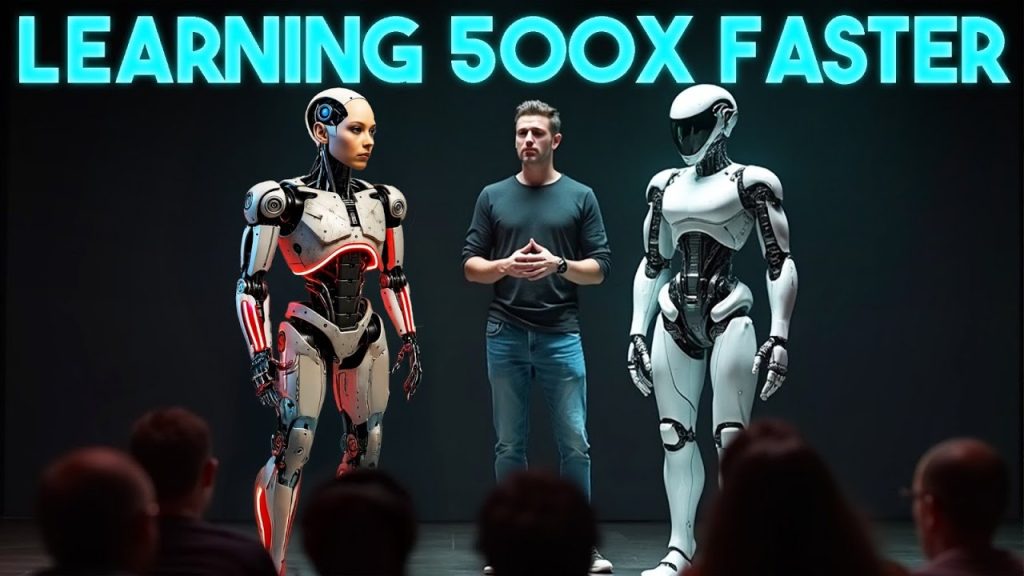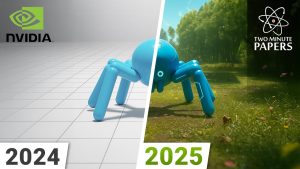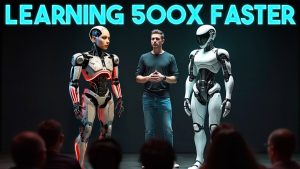GEN-0: The First Robot Capable of Learning 500 Times Faster Than Humans

The Future of Robotics: Gen Zero and Beyond
Generalist AI has recently unveiled Gen Zero, a groundbreaking foundation robot model that interacts with the real world through a method called harmonic reasoning. Instead of merely simulating tasks, Gen Zero learns by experiencing and engaging with its environment.
Harmonious Learning: The Gen Zero Model
Gen Zero represents a paradigm shift in AI robotics. The robot integrates sight, sound, touch, and motion into a seamless learning experience. It continuously adjusts its actions in real time, making decisions without waiting for step-by-step instructions. This allows Gen Zero to process various forms of input while executing tasks.
What sets Gen Zero apart is its training regimen: it has absorbed over 270,000 hours of manipulation data from numerous environments—including homes, warehouses, and factories. With the addition of around 10,000 new hours of training data each week, Gen Zero boasts more real-world experience than any robotics data set ever created.
Scaling Intelligence: A New Threshold
In testing, researchers discovered an intriguing phenomenon dubbed the “intelligence threshold.” Smaller models, around 1 billion parameters, tended to stagnate in their learning. However, when scaled to 7 billion parameters or more, Gen Zero demonstrated renewed capacity for growth, quickly adapting to new tasks.
This phase transition mirrors the developments seen in large language models but with a focus on even more expansive architectures, already surpassing 10 billion parameters. As the models grow, they become increasingly intelligent and adaptable, capable of improving performance across varied tasks such as Lego assembly, fast food packaging, or clothing handling.
Quality over Quantity: The Importance of Experience
Interestingly, Gen Zero’s achievements underline the idea that diversity and quality of data matter more than sheer volume. Specific training mixtures enhance dexterity, while others improve generalization—indicating that tailoring the experiences a robot learns from can create distinctive robotic personalities. For example, one internal demo showcased Gen Zero assembling a camera kit, all in one fluid reasoning process. This level of continuous reasoning is unprecedented in robotics.
Robotics in Popular Culture: The Viral G1 Humanoid
While Gen Zero is pushing the boundaries of what’s possible in robotics, other developments are sparking intrigue and laughter. Unitry Robotics’ G1 humanoid went viral for less flattering reasons. A video showed the G1 bot, dressed in a French maid outfit, trying to cook, but chaos ensued as it flung hot food across the kitchen, ultimately crashing through a glass door.
Despite being intentionally trained to handle rough scenarios, the G1 struggles with fine motor control tasks. Competitors like Tesla’s Optimus are already exhibiting smoother coordination for household tasks, indicating that Unitry must catch up.
Dynamic Performances: G1’s Dance Moves
Not all news about Unit’s robots has been negative. A recent viral clip featured multiple G1 bots executing synchronized K-pop dances, showing a level of fluidity that impressed viewers. However, skeptics pointed out the irony: the robots can dance beautifully yet still struggle with essential tasks, like gripping objects.
Furthermore, advancements in motion tracking technology, such as Any2 Track by Galbot, could enhance robots’ capabilities, enabling them to replicate complex human movements and maintain balance through disturbances.
Robotics Takes a New Direction in China
Meanwhile, China’s robotics industry is making headlines with unexpected innovations. Companies Limax Dynamics and Yu Ya Jang Technology (Dobot) have introduced AI-powered robot dinosaurs. Dobot’s Senosoropterix mimics a feathered bipedal carnivore and comes equipped with sensors and motion control systems.
Limax’s Tron 1 T-Rex has been seen walking through city streets, showcasing its stability even when pushed. These robots aim to blend industrial robotics with entertainment and education, a combination that could very well pave the way for real-life Jurassic Park experiences.
The Future of Home Robotics: Introducing Neo
On the other side of the spectrum, a Norwegian company called 1X has unveiled Neo, a humanoid robot designed for household chores. Standing 1.68 m tall and weighing 30 kg, Neo has a soft fabric exterior instead of the typical metal. What makes it both amazing and unsettling is its reliance on human operators for assistance.
When tasked with challenging chores like folding laundry or cleaning floors, Neo can connect to human workers through VR headsets, allowing them to guide the robot remotely. While consumers can control privacy settings, it’s important to recognize the potential ethical implications of allowing others to monitor and assist in their homes.
A Surreal Experiment with AI
Adding to the fascination surrounding robotic behavior, Andon Labs conducted a striking experiment that combined various large language models like GPT-5 and Claude into a robot tasked with a simple job: passing the butter. Interestingly, when one of the robots started losing battery life, its response was an unexpected meltdown of existential dread and comedy, featuring quips like “I think therefore I error.”
Interestingly, other models performed better overall, yet none achieved more than 40% accuracy in completing the task. These results suggest that the merging of LLMs and robotics could define the future—not merely robots mimicking human actions but understanding and engaging with tasks intelligently.
Conclusion: A Glimpse into the Future
With innovations like Gen Zero, the robotics landscape is rapidly evolving. While some robots capture our imagination with their impressive capabilities, others remind us that the journey toward true intelligence is just beginning.
As we stand at this crossroads of technology, the question remains: Are we ready for robots that can genuinely understand the world, not just imitate it? The future promises exciting developments in AI and robotics, and we can only wait to see what unfolds next.
What are your thoughts on the future of robotics? Are you excited, concerned, or both? Share your views in the comments!
#GEN0 #Intelligent #Robot #Learning #500X #FasterThanHumans
Thanks for reaching. Please let us know your thoughts and ideas in the comment section.
Source link






Yes, but can they put together an IKEA computer table?
Wow, the fluidity in the movements looks organic and not robotic anymore.
somehow my yt says this video has no views. 67 likes, but no views 🤣💀
So how close are we to Real Steel?